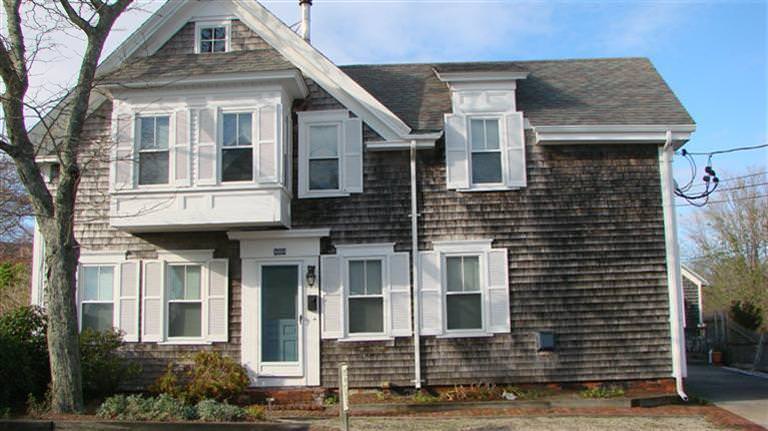A great Boston Globe article below. The Herring Cove Bathhouse’s last hurrah!
PROVINCETOWN — The bathhouse at Herring Cove Beach is on its last legs. The nearly 60-year-old modernist structure dominates this little slip of the National Seashore at the tip of Cape Cod, but the floors are cracking, and the second floor was condemned years ago. Demolition will begin in October.
But the bathhouse is going out with a bang. Artist and impresario Jay Critchley has spearheaded “Ten Days That Shook the World: The Centennial Decade,” featuring art installations, performances, panel discussions, video screenings, and more at the bathhouse and on the beach, Sept. 28-Oct. 7. Friday’s opening includes a campfire and marshmallow toasting on the beach, with music by Screem Along with Billy/Clap for Sue and Magic & the Reggae Stars.
“It’s a classic modernist structure, built as a fortress to protect us from nature, and now nature is encroaching,” Critchley said of the bathhouse. On a blustery, sunny day earlier this week, as electricians laid cable through sand and artists busily worked around the bathhouse, he was taking a break in the musty-smelling lifeguard lounge.
Critchley is known for running the Provincetown Swim for Life & Paddler Flotilla benefit, and for a variety of comic, politically incisive art projects. These include his massive multi-artist 2007 installation “The Beige Motel,” for which he completely encrusted a North Truro motel in sand and invited artists to create installations in the rooms. But even with Critchley’s experience organizing such events, “Ten Days That Shook the World” has been a marathon run at a sprinter’s pace.
Ten Days That Shook the World: The Centennial Decade
Herring Cove Beach bathhouse, Cape Cod National Seashore, Provincetown 508-487-0011. www.10daysofart.org
- Opening date:
- Sept. 28-Oct. 7.
“The bathhouse was originally going to be torn down in 2014,” he said, and he had spoken to George Price, National Park Service superintendent for the Cape Cod National Seashore, about doing the project then. “But money came in early, and I got a call from George in July.” Critchley said. “It was a two-year planning project in two months.”
More than 30 events will touch on themes such as the environment, time and impermanence, and Provincetown’s inception as an art colony 100 years ago, between 1910 and 1920. “Ten Days That Shook the World” is held under the auspices of the Provincetown 10 Days of Art 2012 Festival and the Provincetown Community Compact. The event’s title refers to journalist and activist John Reed’s account by the same name of the Russian Revolution in 1917. Reed was also an early member of the Provincetown Playhouse, founded in 1915.
“That decade was the progressive era in American history,” said Critchley. “There was suffrage, birth control — Margaret Sanger was in Provincetown. There was the labor movement, muckrakers. Then World War I came, and the government started cracking down on activists.” He sees parallels today, he added.
History-themed events will include actor Tim Babcock’s performance “1912 or 2012? You Decide,” a couple of renditions of plays by Eugene O’Neill, a Provincetown Playhouse founder, and a panel discussion, “Provincetown’s Centennial Legacy: State of the Art Colony.”
While Critchley spoke about “Ten Days,” artists were at work on their installations. Vicky Tomayko and Maryalice Johnston had set up a work table covered with paint and stencils in the men’s changing room, and were painting female figures and fish in the shower stalls. Jennifer Hicks had filled the original electric utility room with sand, gauzy fabric, and sparkles, and intended to create a nest on the floor complete with giant eggs visitors might sit on.
“It’s about the tree swallows roosting around here right now,” Hicks said. “There are thousands of them, eating bayberries.” In addition to her installation, Hicks is scheduled to lead a free class in Butoh, an image-based Japanese dance tradition, on Sept. 29 followed by a performance on Sunday. “I’ve got everyone a hazmat suit, and people will be painting birds on their backs as they move,” Hicks said.
Outside, Paul Wirhun was covering the concession stand with designs and illustrations in tape. He planned to paint the walls, then remove the tape to reveal a seascape. Inside, photographer Marian Roth had boarded over the windows of the hot dog stand in order to turn it into a giant pinhole camera. According to Critchley, performance artist Heather Kapplow will take over another portion of that building Oct. 6, and invite visitors to make their own concessions.
Every evening, there will be a campfire on the beach, and the bathhouse will be lit.
Next summer, visitors to Herring Cove Beach will have new facilities. Several smaller shingled buildings, linked by boardwalks, will provide a more intimate experience compared with the bulwark of the old structure.
“This isn’t charming,” said Critchley. “This is monolithic. It’s out of character with the landscape and architecture of Cape Cod. But this is a monument. People wouldn’t build anything like this again. It’s an excess of material, an excess of space.”
He was standing on the concrete platform that separated the building from the beach, squinting at the few tiny windows along its beige walls. “There’s a determinism to this building, that it will last forever. It is a self-righteous and in a way arrogant building. And it has held its ground for 60 years,” he said.
The wind riffled his shirt. “But the times are a-changing,” he said, “and the climate is a-changing.”
Cate McQuaid can be reached at [email protected].
 I have reposted an article below about the positive response builders are having to current high demand which is the highest in over 6 years with 5 straight months of positive growth…but just like buyers in some some South Florida markets finding a lack of available inventory, builders are finding a lack of building lots inventory to build on.
I have reposted an article below about the positive response builders are having to current high demand which is the highest in over 6 years with 5 straight months of positive growth…but just like buyers in some some South Florida markets finding a lack of available inventory, builders are finding a lack of building lots inventory to build on.










